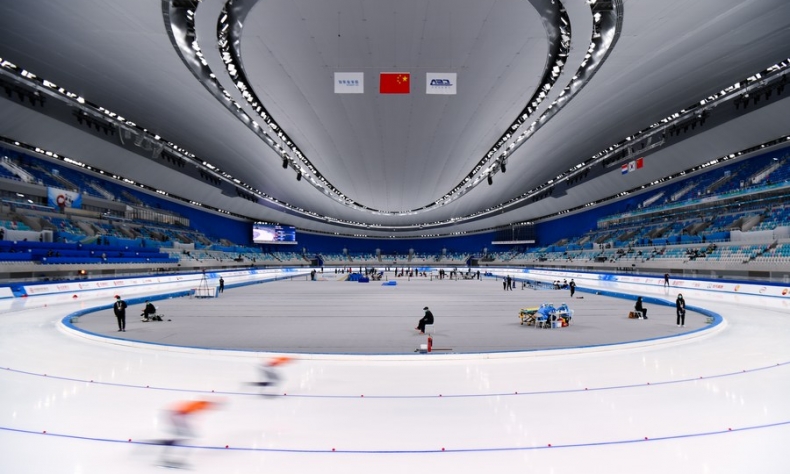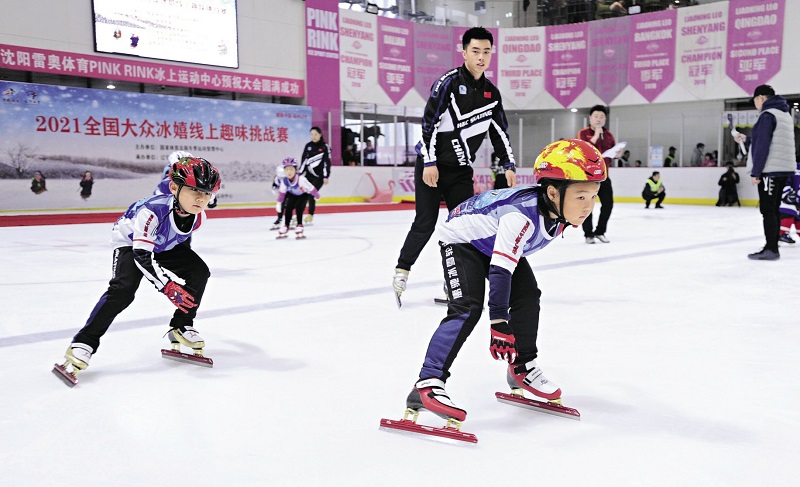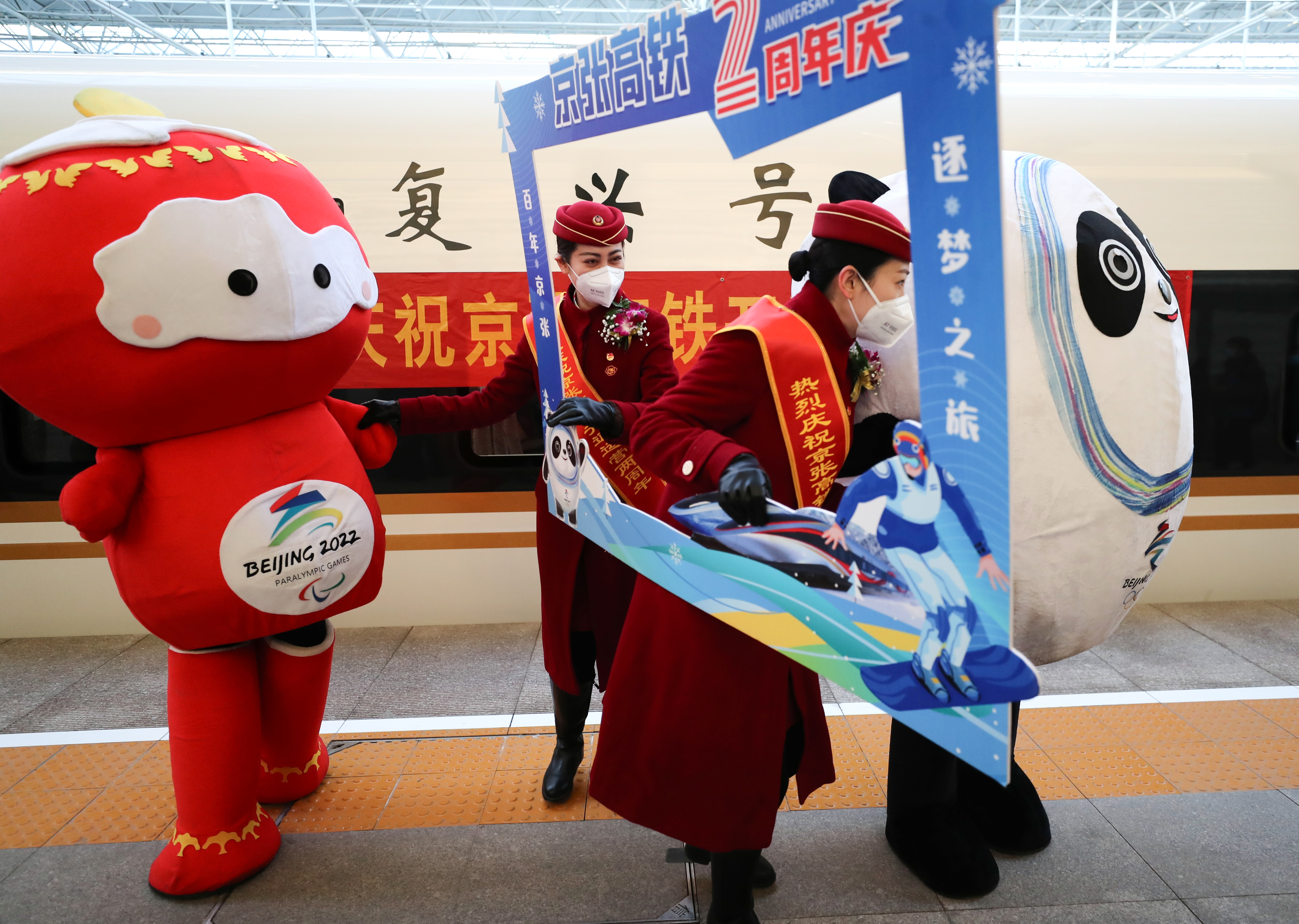Beijing 2022: A New Starting Point

Historically, China has never seen a snow and ice sports craze in most parts of the country. But Beijing 2022 has sparked growing interest among the Chinese in these sports.
As athletes from around the world will vie in Beijing, its mountainous suburb Yanqing, and in nearby Zhangjiakou in Hebei Province, Beijing will make history as the first city in the world to host both the Summer Olympics (in 2008) and the Winter Olympics.
The Chinese government’s great interest in winter sports is not just with an eye on Beijing 2022 but to popularize winter sports domestically as part of the country’s efforts to promote well-rounded human development and meet people’s ever-growing needs for a better life. The country’s vision is to see 300 million Chinese start playing winter sports, not only in the traditional “ice provinces” in the northeast, but also in other provinces, including Hebei, where Zhangjiakou is a well-known ski resort because of its transformation into a place for snow sports, and the autonomous regions of Inner Mongolia and Xinjiang. Over the last two years, Beijing residents have been able to try out various winter sports thanks to the facilities built in the city and nearby places.
This interest has been praised by the International Olympic Committee, with its President Thomas Bach saying in a recent interview with Xinhua, “President Xi had the vision to engage 300 million Chinese people in the winter sports… this is a huge legacy for the Chinese people. And the legacy is as huge for the global winter sports.” He believes that Beijing 2022 will create history.
The government’s promotion of winter sports is spreading to other provinces as well, even to warm regions of China. In fact, shopping malls in southern provinces, such as Guangzhou, a business hub in south China, already have skating rinks and artificial snow facilities.
Historically, China has never seen a snow and ice sports craze in most parts of the country. But Beijing 2022 has sparked growing interest among the Chinese in these sports. China released The Ice and Snow Sports Development Program (2016-2025) five years ago, highlighting priority sectors for investment, including winter sports infrastructure, snow equipment manufacturing, a competitive performance industry, tourism, and winter sports education. China also set the 2025 target of growing the total value of the winter sports industry to about US $155 billion and building 5,000 elementary and middle schools that focus on winter sports.

The 2020 China Ski Industry White Book indicated the number of ski resorts and total skier visits grew by 35 percent and 67 percent respectively between 2015 and 2019. The number of indoor ice skating rinks is also planned to increase to 650 in 2022, up from 188 in 2016, to facilitate the mass winter sports promotion while whetting consumption in related businesses.
A China News Service report in October 2021 shows the Beijing 2022 Olympic Winter Games have in particular sparked young people’s interest in winter sports. According to the report on young Chinese’s participation in winter sports, over 30 percent of college students have taken up a winter sport and nearly 50 percent of them have a deeper understanding of winter sports.
The Winter Olympics is being run on a tight budget. The announced estimated budget of US $3.9 billion for the Winter Games, is less than one-10th of the whopping US $43 billion for the 2008 Olympics. This has been made possible because some of the 2008 venues have been reprised for the Winter Games, including the National Stadium (also known as the “Bird’s Nest”) and the National Aquatics Center (aka “Water Cube”).
The country’s devotion to the Winter Games has been capped with a high-speed railway line connecting the Games’ three competition zones: downtown Beijing which will stage all ice sports, the capital city’s northwest Yanqing District, and co-host city Zhangjiakou in Hebei Province staging all the snow events.
The Beijing Organizing Committee for the 2022 Olympic and Paralympic Winter Games (BOCOG) unveils its official uniforms for staff, technical officials, and volunteers on October 27, 2021 at the launching of the 100-day countdown to Beijing 2022.
With a maximum speed of 350 kilometers per hour, the 174-km line has shortened travel time between downtown Beijing and Zhangjiakou from over three hours to about 50 minutes. Taizicheng Station is the line’s final stop in Chongli, a suburban district of Zhangjiakou, housing the 2022 venues for cross-country skiing, biathlon and ski jumping.

Chinese hospitality will also be fully displayed by the 678 dishes that will be served at meals by the organizer to athletes for the Beijing 2022 Winter Olympics from diverse cultural backgrounds. Elements of the Chinese Lunar New Year, as Beijing 2022 will coincide with the Chinese New Year, and environmental protection will be highlighted in the dishes that have taken into account the different dietary needs of athletes.
Besides showcasing China’s development since 2008 and its people’s enthusiasm in winter sports, Beijing 2022 is also promoting Chinese art and culture. The Winter Games emblem, created by artist Lin Cunzhen, is a combination of modern and traditional elements of Chinese culture. The emblem, inspired by the Chinese character 冬 for winter, symbolizes a skater at the top and a skier at the bottom. The floating ribbon in the middle symbolizes the mountains and the competition venues. Sports pictograms are the graphical interpretation and expression of sports events. The released Beijing 2022 Olympic and Paralympic Winter Games sports pictograms, which were inspired by the Chinese characters with seal carving as the main form, come as a combination of winter sports and traditional Chinese culture, showing the power and beauty of winter sports as well as the charm and soul of Chinese culture.
To ensure a safe environment, a third booster dose of the COVID-19 vaccine is being administered through designated hospitals and community health centers while the Olympic venues will be cut off from outside contact to ensure zero infection. All assuring preventive measures are in place.
Unlike the Tokyo Summer Olympics, where spectators were not allowed, Beijing 2022 will allow on-site spectators but only those who are already on the Chinese mainland and have met the health criteria. However, hosts of TV channels, from domestic to international ones like Eurosport, will air the events, which will add to the Spring Festival celebrations.
And last but not the least, during the last Winter Games in Pyeongchang in the Republic of Korea in 2018, China took part in only about half of the events, sending 82 athletes, and won only nine medals, including just one gold and six silvers. However, this time, according to the organizing committee of Beijing 2022, Chinese athletes will take part in all 109 events. So hopes are high for a much improved tally this time.
Adriano Madaro is an Italian writer, journalist, and a well-known expert on China. He has published more than 30 books on modern China.
 Facebook
Facebook
 Twitter
Twitter
 Linkedin
Linkedin
 Google +
Google +










